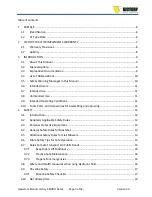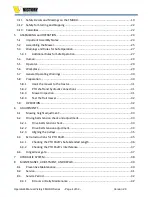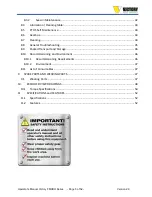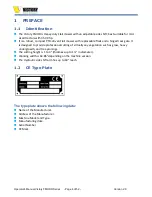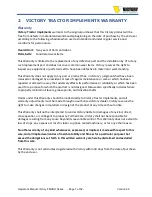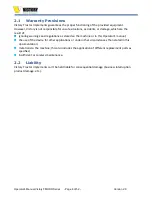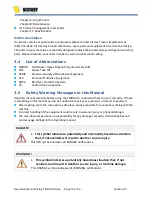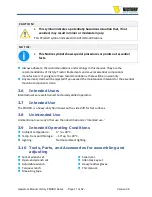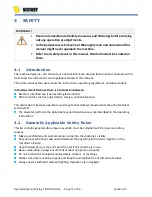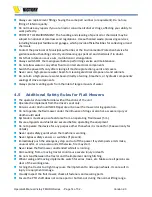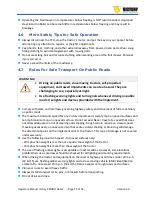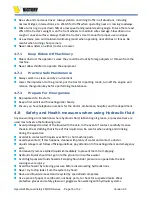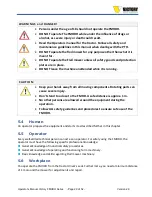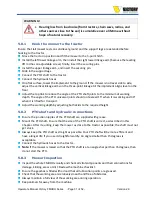
Operator
’s Manual Victory FMHDH Series - Page 17 of 52 -
Version 2.0
◼
If an accident occurs, see a doctor immediately. Always treat any fluid injected into the skin
within a few hours.
4.9
Driveline Safety
Agriculture and forestry are very hazardous occupations.
Today’s farmer spends long hours
close
to increasingly complex and powerful machinery.
◼
Everyone from the component supplier and the company that manufacturers and assembles
the machinery to the dealers and ultimately the actual user must keep safety in mind to avoid
accidents.
The following checklist relates to the driveline of agricultural implements, general safety literature,
and the standards published by the American Society of Agricultural Engineers.
4.9.1
Driveline Safety Checklist
Driveline Specifications
The first step toward safe applications is to specify and test the driveline to operate appropriately
under expected field conditions.
◼
Specify and test the proper size joints and telescoping parts based on the power required by
the implement, rotation speed, joint angles, shock loads, and expected lifetime.
◼
Test the hitch geometry to prevent the driveline from:
•
Extending beyond the recommended maximum length.
•
Bottoming out.
•
Reaching a position that allows universal joints to lock.
•
Exceeding the maximum allowable angle for the constant velocity of the universal joints.
You can find information concerning these parameters in all driveline
manufacturer’s
catalogs.
◼
Specify and test telescoping parts to allow the lowest possible thrust loads, considering the
expected working conditions.
◼
Specify and test torque limiters to control excessive shock loads.
◼
Specify and test overrunning clutches to prevent inertial loads from overpowering the tractor.
Hazard Reduction
The second step in specifying a safe driveline application is to strive to eliminate as many hazards
as possible
◼
On a driveline with torque limiting or overrunning devices, specify that this device is positioned
at the end of the driveline near the implement.
◼
To implement connections that require bolts or set screws, select and/or supply hardware that
minimizes protrusions. You can find Information concerning these parameters in all driveline
manufacturer’s
catalogs.
◼
For the tractor's PTO shaft connections, specify a safety type yoke (twist or slide collar) to
minimize protrusions.
◼
Provide a proper clearance zone for the driveline operation to avoid damaging the shielding
components.
Some common areas of interference are:

